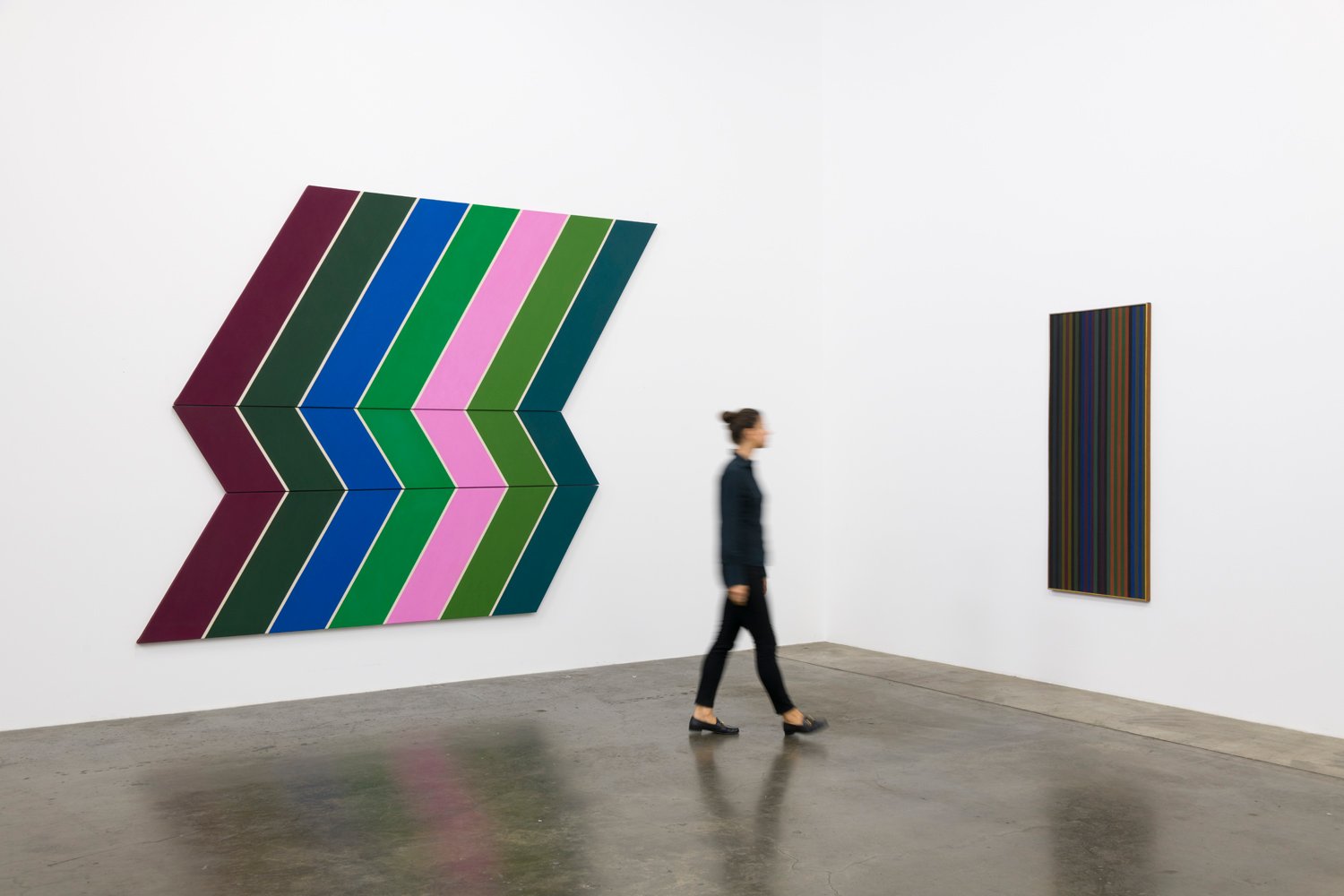
Just two years ago, the visual arts arm of United Talent Agency, UTA Fine Arts, opened its first exhibition space in Los Angeles’s Boyle Heights neighborhood. They staged a handful of exhibitions there—from a mini Larry Clark retrospective to a survey of Petra Cortright’s video work—but now the organization is moving to a new home.
UTA Fine Arts will open its next show, “One Shot,” an exhibition of works by Color Field artists from the late 1950s to the early ’70s, in a 4,000-square-foot warehouse that once housed a diamond-cutting facility. The building, built in the 1940s, is within walking distance of the main campus of UTA—the non-visual arts related talent agency that represents the likes of Maria Carey and Chris Pratt—in Beverly Hills.
Josh Roth, head of UTA Fine Arts. Courtesy of UTA Fine Arts. Photo: Alex J. Berliner/ABImages.
The move comes as a bit of a surprise. Why relocate after such a short time? But Josh Roth, the head of UTA Fine Arts, has been pondering the move for years. In fact, every day on his drive to work, Roth noticed the seemingly unused building 200 yards away.
“I would always pass by it and think to myself, ‘That would make the coolest art gallery,’” he tells artnet News. “I just had a feeling that it was amazing inside. The outside was very rundown, but I had a hunch.”
One evening last year, Roth was driving home and noticed a real estate broker in front of the building putting up a “For Lease” sign.
“I got out of the car and walked over to him and I go, ‘You know, I’ve been driving by this building every day for three-and-a-half years. What’s the deal?’ The agent was on his way to dinner, but I said, ‘You’ve got to take me inside. I won’t be able to sleep tonight.’”
Helen Frankenthaler, Pavillion (1971). Courtesy of UTA Fine Arts.
A day or two after seeing the space, Roth happened to meet with Ai Weiwei, who was in town doing press for his documentary about the European refugee crisis, Human Flow (2017). Roth showed Ai the space, and the artist, who saw similarities between it and his studio in Beijing, immediately offered to help with a redesign.
The Chinese artist, who signed with the agency in 2016, worked with Roth and the site’s official architect, Daveed Kapoor, to design several aspects of the new space, from the layout and floor plan to the doors and exterior details.
In October, Ai will mount a solo exhibition—his first in LA—at the new UTA Artist Space.
Installation view from left: Kenneth Noland’s Missus (1962), Jules Olitski’s Basium Blush (1960), and Kenneth Noland’s Spring Call (1961). Photo: Jeff Mclane. Image courtesy of UTA Fine Arts.
The move has given the business an opportunity to reflect on its evolution so far. Ironically, what started out as an amorphous endeavor greeting with a quizzical reception by the art world is slowly becoming more and more like a traditional gallery at the same time that traditional galleries are increasingly coming to resemble multimedia brands.
“We’ve learned a lot over the course of the last three-and-a-half years,” Roth says. “Building a startup is a very specific discipline. I think we’ve learned how to produce an exhibition and to identify who exactly the right type of client for us is—that is, the people who truly want to extend beyond just showing in a gallery, who are interested in publishing books, making films, and so on. We’ve also discovered that there’s a tremendous amount of receptivity to what we’re doing in the art world.”
Kenneth Noland, Missus (1962). Courtesy of UTA Fine Arts.
“One Shot,” featuring paintings by artists like Helen Frankenthaler, Kenneth Noland, and Jules Olitski, is a bit of a departure for the gallery, which up until this point has mounted exhibitions mostly by younger artists.
But the subject matter is in line with another of the company’s recent initiatives, the UTA Brant Fine Art Fund, which, according to dealer and artnet News columnist Kenny Schachter, seeks to “raise $250 million to speculate on ‘best-in-class’ works by blue-chip postwar (i.e. 1945–70) and contemporary (i.e. 1970–present) artists, with an investment lock-up of seven years or more.”
Roth declined to comment on the art fund, and UTA has otherwise kept details about it under wraps.
See more photos of the exhibition below.
Installation view of “One Shot.” Photo: Jeff Mclane. Image courtesy of UTA Fine Arts.
Installation view of “One Shot.” Photo: Jeff Mclane. Image courtesy of UTA Fine Arts.
Installation view of “One Shot.” Photo: Jeff Mclane. Image courtesy of UTA Fine Arts.
“One Shot” will be on view at UTA Artist Space July 12-August 18.